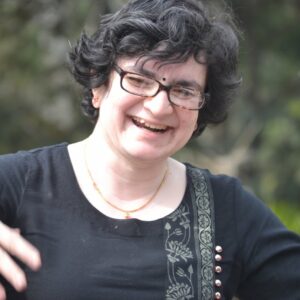Yesterday we celebrated the National Science Day at IGIB with great enthusiasm and camaraderie. It felt great to come out of our isolated bubbles to work with, laugh with and paint with our colleagues and friends.
Video credits: Sangeetha K
Each year 28th February is celebrated as the National Science Day in the country to commemorate the Nobel Prize winning discovery of CV Raman. In 1928, CV Raman and his student SK Krishnan had observed light traversing through chemical compounds undergoes scattering resulting in a change of the wavelength of the emerging light. This effect is now known as the Raman effect. CV Raman was awarded the Nobel Prize in Physics in the year 1930 and was soon appointed the Director of the Indian Institute of Science, Bangalore. He was the first Indian director of IISc.
In the year 1933, a 22-year-old girl who had just graduated with distinction from Bombay University applied for a research fellowship to pursue MSc at IISc. Her application was rejected. The reason for the rejection was that she was a woman. The rejection had come from none other than the Nobel laureate himself, because he believed that women do not have the ability to study science.
The young girl did not give up, she sat on a Satyagraha outside the Director’s office and eventually, he had to admit her. She was allowed to study at IISc, but on probation. She was not allowed to work in the lab during daytime, but had to work only late at night, because Raman did not want a female student to be a cause for distraction to the male students in the lab! These restrictions did not break her resolve, she persevered through it all and completed her degree with distinction. Eventually she got selected for a PhD at the University of Cambridge. Seeing her success and scientific acumen, CV Raman relented and opened the gates of IISc to women in 1937.
The girl was Kamala Sohonie (neé Bhagvat), one of the first Indian women to earn a PhD in science. After finishing her PhD from Cambridge University, she returned to India in 1939. She made her mark as a Professor of Biochemistry at the Royal Institute of Science in Bombay. Her work focused on improving the dietary status of the malnourished in India. She characterized the nutritional value of ‘Neera’, that is extracted from the flowers of toddy palm trees (coconut is one example) and its concentrate palm jaggery. She found that Neera and palm jaggery could be an inexpensive source of carbohydrate, proteins, iron, and vitamins A &C. This would help meet the nutritional needs of a large portion of malnourished children and pregnant women in the country. She went on to become the Director of the Royal Institute of Science.
I cannot imagine the gender bias that Kamala Sohonie and her contemporaries had to face because I never faced it. Their voices and actions saved me from it. I wonder how much more time it would have taken for women to be admitted and accepted for higher studies in the country if Kamala Sohonie had remained silent.
Jean-Paul Sartre said, “Every word has consequences. Every silence too.” On this National Science Day, let us promise to empower ourselves and not let Kamala Sohonie’s Satyagraha be in vain. Let us also pledge to stand by all those who still have Satyagrahas ahead of them.



